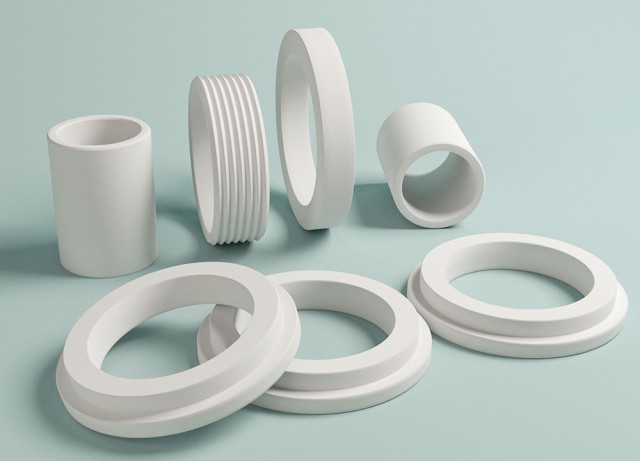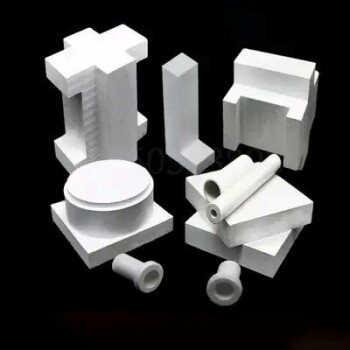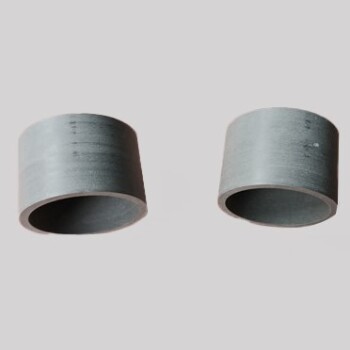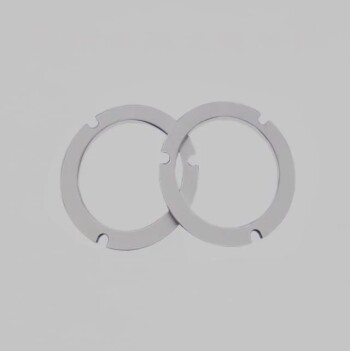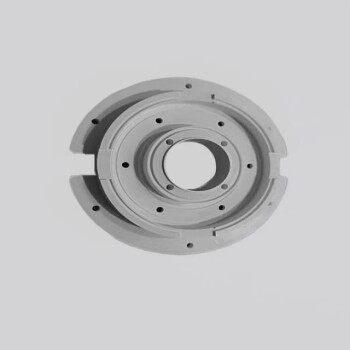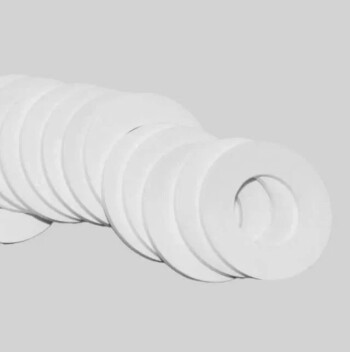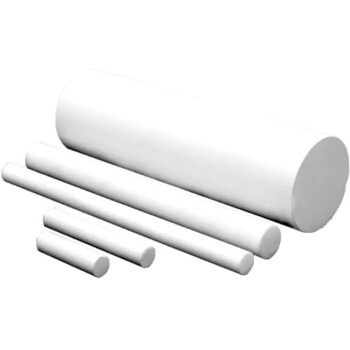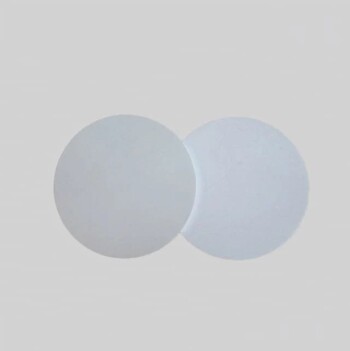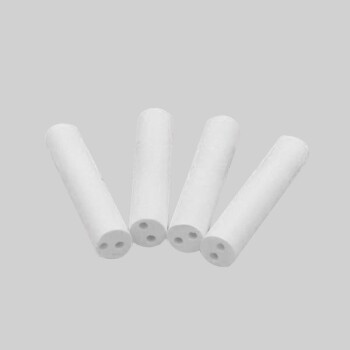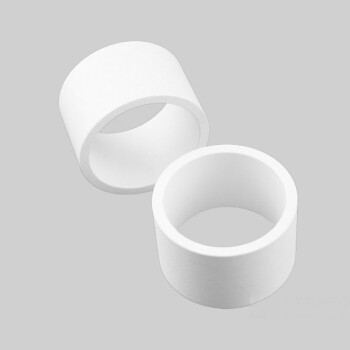Introduction to Hexagonal Boron Nitride (h-BN)
Properties and Applications
Hexagonal boron nitride (h-BN) stands out as an advanced ceramic material, offering an array of exceptional properties that make it highly versatile across various industrial applications. Its unique combination of thermal stability, chemical inertness, and electrical insulation properties positions h-BN as a key component in the development of composite ceramics. These composites are often engineered through sophisticated physical or chemical methods, which typically involve high-temperature processing to achieve optimal material properties.
One of the most notable applications of h-BN is in the realm of ultra-high-temperature insulators and high-purity crucibles, where its inherent resistance to corrosion and high thermal conductivity are indispensable. In aerospace applications, h-BN is often integrated into composite ceramics like BN-SiO2 and BN-SiO2-AlN, which exhibit significant synergistic toughening effects, enhancing mechanical properties and ablation resistance. This makes them ideal for environments where durability and resistance to extreme conditions are paramount.
In scenarios involving molten metals, h-BN-based composites such as BN-ZrO2 and BN-ZrO2-SiC are employed. These materials not only leverage the refractory and wear-resistant qualities of zirconia but also benefit from h-BN's ability to prevent infiltration by molten metals. This dual advantage is particularly crucial in metal evaporation processes, where materials like TiB2-BN and TiB2-AlN-BN composite ceramic evaporation boats are utilized. These boats combine high melting points, corrosion and oxidation resistance, high hardness, and excellent electrical and thermal conductivity, making them indispensable in the metal evaporation industry.
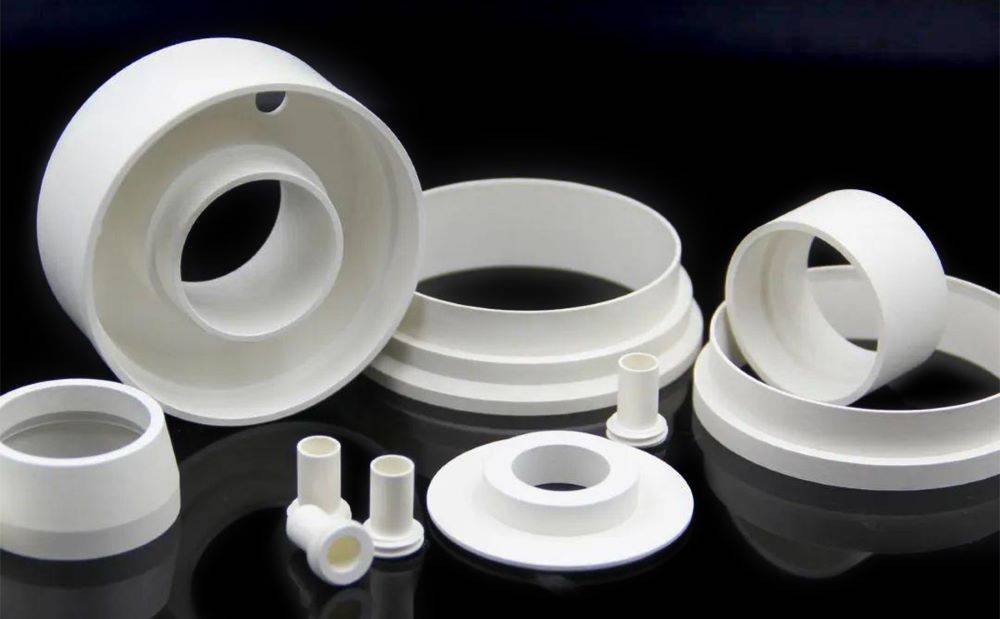
Furthermore, h-BN's reactivity with liquid aluminum to form AlN in certain composite ceramics like those involving borides adds another layer of functionality, optimizing performance in metal evaporation applications. The strategic integration of h-BN in these diverse composite ceramics underscores its pivotal role in enhancing material performance across a broad spectrum of industries.
Categories of Boron Nitride-Based Composite Ceramics
Pure Hexagonal Boron Nitride Ceramics
Pure boron nitride ceramics, particularly those made from hexagonal boron nitride (H-BN), exhibit exceptional properties that make them indispensable in high-temperature and high-purity applications. These ceramics boast superior corrosion resistance, high thermal conductivity, and remarkable temperature resistance, enabling them to maintain structural integrity and performance even under extreme conditions.
One of the standout features of H-BN ceramics is their high insulation capability, which makes them ideal for use in ultra-high-temperature insulators. These insulators are crucial for maintaining the integrity of high-temperature furnaces and vacuum systems, ensuring that electrical components remain protected and operational under intense heat.
In addition to their use in insulators, pure H-BN ceramics are also employed in boron nitride ceramic crucibles. These crucibles are essential for sintering and melting various materials, including alloys, ceramics, rare earth elements, and other high-purity substances. The inert nature of H-BN ensures that these materials remain uncontaminated during processing, which is vital for achieving the desired material properties.
Moreover, H-BN's self-lubricating properties further enhance its utility, particularly in high-vacuum environments where traditional lubricants would fail. This capability allows H-BN ceramics to be used in feedthroughs for high-voltage equipment, where maintaining conductivity while withstanding high temperatures and pressures is paramount.
Overall, the unique combination of high thermal conductivity, corrosion resistance, temperature resistance, and electrical insulation makes pure hexagonal boron nitride ceramics a versatile and indispensable material in advanced industrial applications.
Hexagonal Boron Nitride/Oxide Complex Phase Ceramics
The integration of hexagonal boron nitride (h-BN) with silicon dioxide (SiO₂) and aluminum nitride (AlN) in composite ceramics, specifically BN-SiO₂ and BN-SiO₂-AlN, has demonstrated remarkable synergistic toughening effects. This synergy significantly enhances the mechanical properties, ablation resistance, and densification of these materials, making them highly suitable for demanding aerospace applications.
In aerospace contexts, these composite ceramics are subjected to extreme conditions, including high temperatures, high pressures, and corrosive environments. The toughening effects observed in BN-SiO₂ and BN-SiO₂-AlN ceramics are attributed to the unique interaction between the h-BN and the oxide components, which results in improved fracture toughness and thermal shock resistance. These properties are crucial for ensuring the longevity and reliability of components exposed to the harsh conditions of space travel and atmospheric re-entry.

Moreover, the densification process, which involves the consolidation of these materials into dense, impermeable structures, is facilitated by the presence of h-BN. This densification not only enhances the overall strength of the ceramics but also reduces porosity, which is a key factor in improving their resistance to ablation and erosion.
The applications of BN-SiO₂ and BN-SiO₂-AlN composite ceramics in aerospace are diverse, ranging from thermal protection systems to structural components. Their ability to maintain integrity under extreme conditions makes them an invaluable material in the development of next-generation aerospace technologies.
Hexagonal Boron Nitride/Nitride Complex Ceramics
BN-ZrO2 and BN-ZrO2-SiC composite ceramics are engineered to synergize the superior refractory and wear-resistant properties of zirconia with the non-infiltration characteristics of boron nitride. This unique combination makes these materials ideal for applications involving molten metal, where their ability to withstand high temperatures and resist metal penetration is crucial.
In scenarios where molten metal is involved, these composite ceramics offer unparalleled performance. They are particularly suited for use in high-temperature furnaces and vacuum systems, where they serve as insulators and electric insulators. Additionally, their application extends to feedthroughs for high-voltage equipment, ensuring reliable performance under extreme conditions.
The incorporation of hexagonal boron nitride (H-BN) into these ceramics enhances their overall utility. H-BN, known for its self-lubricating properties, maintains its lubricity even in high vacuum environments, making it an excellent choice for crucibles used in sintering and melting processes for alloys, ceramics, and rare earth materials. This dual-functionality—combining high-temperature resistance with non-infiltration—positions BN-ZrO2 and BN-ZrO2-SiC composite ceramics as indispensable components in advanced manufacturing and metallurgical processes.
Hexagonal Boron Nitride/Carbide Complex Ceramics
TiB2-BN and TiB2-AlN-BN composite ceramic evaporation boats are pivotal in the metal evaporation industry. These materials are engineered to withstand extreme conditions, combining a high melting point, exceptional corrosion and oxidation resistance, and high hardness. Additionally, they exhibit superior electrical and thermal conductivity, making them ideal for applications where precise temperature control and material integrity are crucial.
The high melting point of these ceramics ensures that they can endure the intense heat required for metal evaporation without degrading. This property is complemented by their corrosion and oxidation resistance, which allows them to maintain structural integrity over extended periods, even in harsh environments. The high hardness of these materials further enhances their durability, reducing wear and tear during operation.
Moreover, the excellent electrical and thermal conductivity of TiB2-BN and TiB2-AlN-BN composite ceramics ensures efficient heat distribution and rapid response to temperature changes. This makes them particularly suitable for applications where maintaining a stable and controlled environment is essential, such as in the production of high-purity metals.
In summary, these hexagonal boron nitride/carbide complex ceramics are not only robust and resistant to extreme conditions but also highly conductive, making them indispensable in the metal evaporation industry.

Hexagonal Boron Nitride/Boride Complex Ceramics
Hexagonal Boron Nitride/Boride Complex Ceramics are specifically engineered for applications where h-BN and liquid aluminum interact to produce AlN, thereby optimizing metal evaporation processes. These ceramics are not only known for their high-temperature resistance but also for their ability to maintain lubrication in high vacuum environments, making them ideal for use in high-voltage equipment feedthroughs and vacuum system insulators.
The unique properties of h-BN, such as its excellent electrical resistance and mechanical behavior similar to graphite, contribute significantly to the performance of these complex ceramics. For instance, the use of h-BN in crucibles made from hot-pressed boron nitride blanks ensures that these materials can withstand extreme conditions, such as those encountered during the sintering and melting of alloys, ceramics, and rare earth materials.
In summary, Hexagonal Boron Nitride/Boride Complex Ceramics are a critical component in high-temperature applications, leveraging the synergistic effects of h-BN and liquid aluminum to achieve superior results in metal evaporation processes.
Related Products
- Advanced Engineering Fine Ceramics Boron Nitride (BN) Ceramic Parts
- Conductive Boron Nitride BN Ceramics Composite for Advanced Applications
- Hexagonal Boron Nitride HBN Ceramic Ring
- Custom Boron Nitride (BN) Ceramic Parts
- Hexagonal Boron Nitride HBN Spacer Cam Profile and Various Spacer Types
